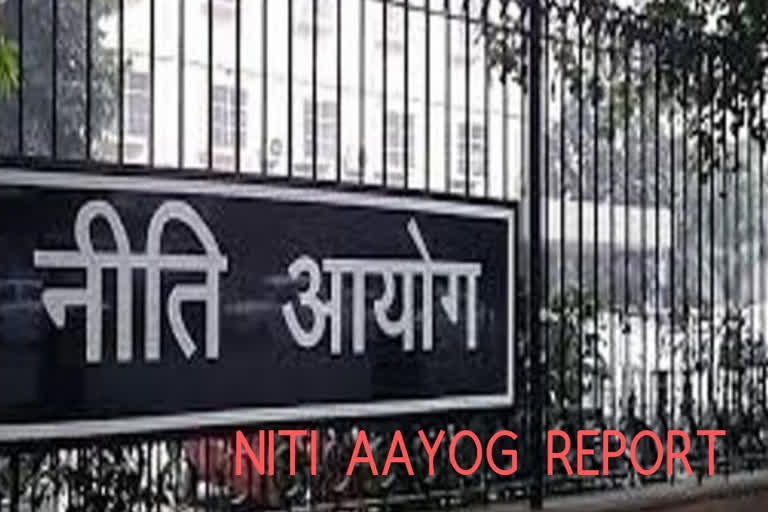Hyderabad (Telangana): Government-funded healthcare is still out of reach for many people. The NITI Aayog released a report about the miserable state of public healthcare in India.
It pointed out several challenges in achieving an improvised healthcare system. While other nations worldwide are spending a lot on their citizens’ health, India is far from being worthy of mention in this regard. For innumerable Indians, government healthcare, to date, has been unviable.
The NITI Aayog’s latest report is a proof to the dire state of public health in our country. As a part of its exercise towards building a New India, NITI Aayog identified several focus areas. If we take the total expenditure on healthcare as a proportion of Gross domestic product (GDP), India’s pale spends are evident when compared to nations like Sri Lanka, Indonesia, Egypt and the Philippines.
The average personal health spending is only 18 per cent internationally. But on the national level, an individual has to bear 63 per cent of the total medical expenses. The prestigious Pradhan Mantri Jan Arogya Yojana covers only 40 per cent of the population excluding 5 per cent who are already covered under various government and private health insurances.
These figures show that there is no health protection for the majority of people. The National Health Protection Scheme revealed that medical bills are pushing 6 crore people every year into debts. On the other hand, there are people who are unable to derive the benefits of health insurance due to the lack of proper directives and guidance. Annually, about 24 lakh lives are lost due to the absence of timely medical services.
Also read: 'Maha' political crisis LIVE: SC to deliver judgement after receiving MLAs letter of support
NITI Aayog has made several suggestions to improve the state of healthcare and gain the trust of people. The strategy is clearly aimed at safeguarding the lives of at least 10 lakh infants by 2030 and to reduce the mortality rate of working-age elderly population by 16 per cent.
Though the growth of medical tourism sounds fancy, it is the responsibility of the governments to prioritize the well-being of citizens.
India stands 145th among the 195 surveyed countries in terms of healthcare access and quality. China, Bangladesh, Sri Lanka and Bhutan fared much better than us. Even without the assessments of external reports like these, the central government itself had admitted that there is a 20 per cent shortage of primary healthcare centres and 30 per cent shortage in community healthcare centres. India is facing a shortage of 20 lakh doctors and 40 lakh nurses, questioning the concept of safe healthcare.
The government had revealed that 57 per cent of allopathy treatment is administered by unqualified doctors. Lakhs of helpless people are going to quacks. To save their health and money, concrete strategies must be immediately implemented. The NITI Aayog report confirmed that 98 per cent of the hospitals have a staff of less than 10. This proves that only subpar medical treatment is available to those who decide to expend money.
As the hospitals and doctors are mainly concentrated in cities, rural healthcare is dwindling. The NITI Aayog’s warning that the health protection scheme will see a rise in fake medical insurances and people bearing the cost of their medical expenses if governments continue to neglect the situation, must be a wakeup call to the politicians.
Nations like South Korea, China, Turkey, Peru and Maldives have streamlined healthcare with the foresighted approach that good public health is mandatory for human resource development. Canada, Qatar, France, Norway and New Zealand are setting an example in healthcare services.
The major reason for this wide gap between India and the above-mentioned nations is the lack of resources. When compared to the per capita healthcare expenditure in India, which is USD 63 (Rs.4,517), China spends 7 times more. While countries like Cuba, Austria, Belgium and Denmark are spending 7-8 per cent of their GDP towards healthcare, India is spending only 1.1 per cent. By reducing the share of personal healthcare spending, the healthcare protection schemes have assumed great importance in nations like Italy, Greece and Hong Kong. Switzerland is taking the necessary steps to ensure healthcare protection to all its citizens.
Bill Gates said, “India is in a very hopeful situation and is set to be an example for other countries in terms of primary healthcare.”
In order to make these words come true and ameliorate the quality standards of government hospitals, several challenges ranging from allocating funds to filling up vacant positions must be overcome. The governments must assert their dedication towards the National Health Protection Scheme and its implementation. Only when the battered medical services are given the right treatment, the state of public health will stabilize.
Also read: Former MP Chief Minister Kailash Joshi passes away



